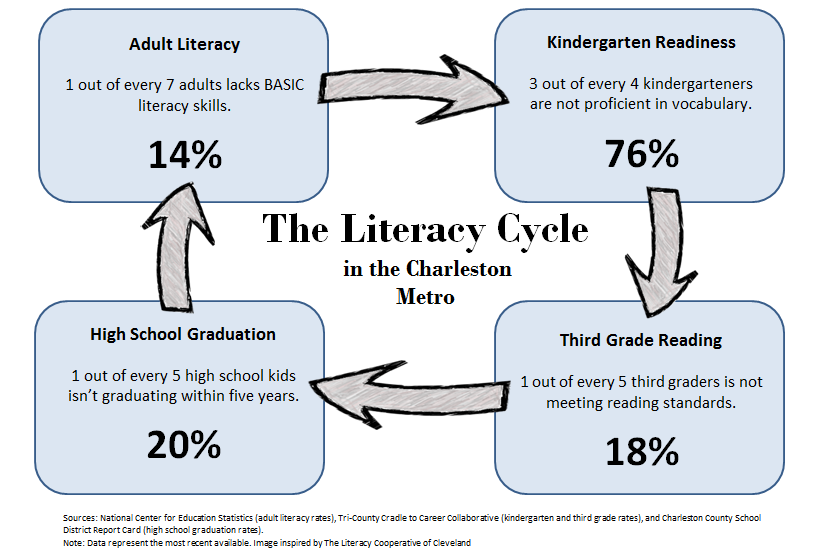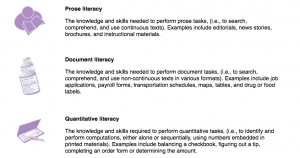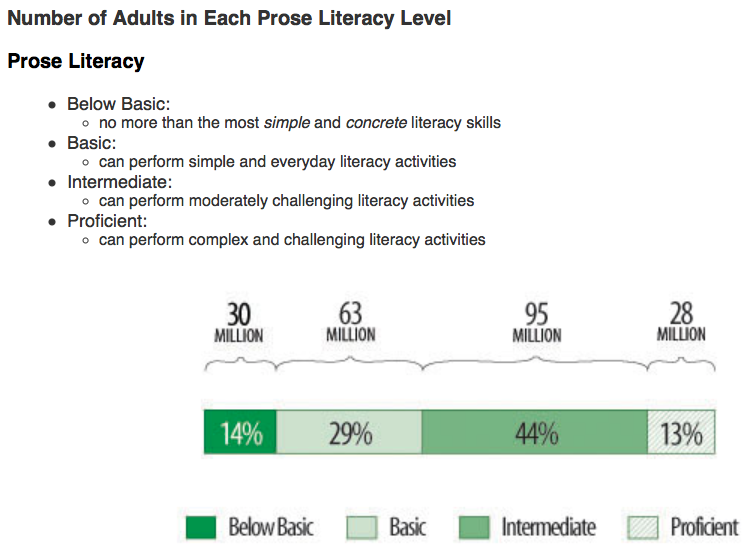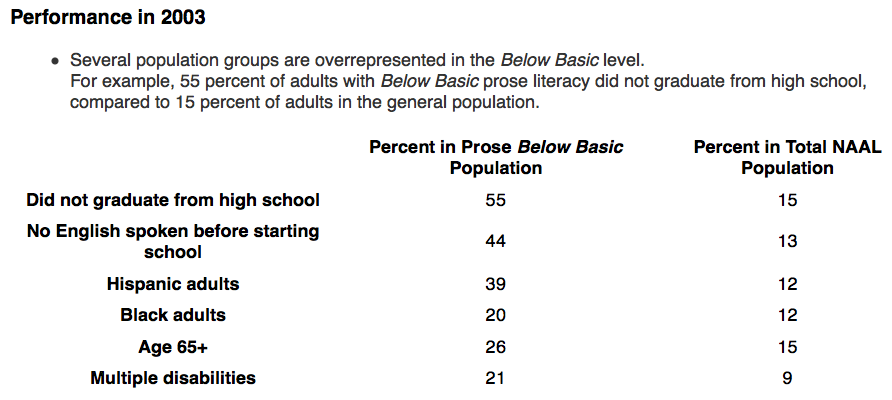What does adult literacy have to do with students’ academic performance?
In seeking to improve student outcomes, it is critical to look beyond schools alone. Parental involvement is especially influential in children’s literacy development, as students begin building the foundations of literacy before ever setting foot in the classroom. Simple interactions between parent and child such as “singing, talking, reading, writing and playing… greatly enhance a child’s pre-literacy skills,” preparing them for later success in the classroom (Celano & Neuman, 2015, p. 31). In fact, “over 50 years of research has shown that when parents are involved, regardless of race, ethnicity, language, or socioeconomic status, children perform better in schools, stay in school longer, and go onto colleges and universities” (Henderson & Mapp, 2002 as cited in Han & Love, 2015, p. 25).
The following graphic from South Carolina’s Trident Literary Association explains how literacy and illiteracy are passed from one generation to the next. Supporting parents and caregivers in learning literacy allows them both to directly support and advocate for their schoolchildren.

Source: Trident Literacy Association. (n.d.). The Literacy Cycle in the Charleston Metro [Digital image]. Retrieved May 15, 2017, from https://tridentlit.org/adult-literacy-matters/literacy-impact/
What is adult literacy and how is it measured?
The most recent survey of literacy among adults in the United States was completed in 2003 by the National Center for Education Statistics. Called the National Assessment of Adult Literacy, the survey examined a sample of 19,000 adults who was representative of the entire U.S. population 16 years of age or older, including the incarcerated population (National Center for Education Statistics, n.d.b). Previous to this, no adult literacy survey of comparable magnitude had been completed since the 1992 National Adult Literacy Survey.
Both the 2003 and 1992 surveys measured three different types of literacy: prose literacy, document literacy and quantitative literacy, defined below. For the sake of this overview, I will focus solely on prose literacy.

Types of literacy as defined by the 2003 National Assessment of Adult Literacy. Source: National Center for Education Statistics. (n.d.). Three Types of Literacy. Retrieved May 15, 2017, from https://nces.ed.gov/naal/literacytypes.asp
Of the adults tested, millions were rated as below proficient in prose literacy, meaning that they couldn’t “perform complex and challenging literacy activities” (National Center for Education Statistics, n.d.a). The graphic below details the number of adults in each category.

Number of Adults in Each Prose Literacy Level. Source: National Center for Education Statistics. (n.d.). Demographics -> Overall. Retrieved May 15, 2017, from https://nces.ed.gov/naal/index.asp
Various population groups were disproportionally represented in the Below Basic Prose Literacy category, including those who did not graduate high school, English language learners, some racial minority groups, the elderly and people with multiple disabilities. These disparate performance levels indicate that adult literacy is a social justice issue.

Adults With Below Basic Prose Literacy. Source: National Center for Education Statistics. (n.d.). Demographics -> Overall. Retrieved May 15, 2017, from https://nces.ed.gov/naal/index.asp
Though various government programs and funds are dedicated to improving rates of adult literacy, the unchanging adult literary statistics of the past decade suggest that there is much more work to be done. Grassroots organizing in adult literacy is a means by which to bridge the gap between need and current results.
References:
Celano, D. C., & Neuman, S. B. (2015). Libraries emerging as leaders in parent engagement. Phi Delta Kappan, 96(7), 30-35. doi:10.1177/0031721715579037
Han, Y., & Love, J. (2015). Stages of immigrant parent involvement — survivors to leaders. Phi Delta Kappan, 97(4), 21-25. doi:10.1177/0031721715619913
National Center for Education Statistics. (n.d.a). Demographics -> Overall. Retrieved May 15, 2017, from https://nces.ed.gov/naal/index.asp
National Center for Education Statistics. (n.d.b). What is NAAL? Retrieved May 15, 2017, from https://nces.ed.gov/naal/index.asp
Background Image:
[Logo of the New Dimension Literacy Council of Ardmore, Oklahoma]. (n.d.). Retrieved May 15, 2017, from http://www.ardmorelibrary.org/literacy/default.htm
Banner Images, left to right:
Friedman, J. (1991). This Is the Way 27 Million Americans Sign Their Name [Offset Lithograph]. AIGA Design Archives.
Friedman, J. (1991). 27 Million Americans Can’t Fill In The Blank [Offset Lithograph]. AIGA Design Archives.
Friedman, J. (1991). To 27 Million American Workers This is A Useless Tool [Offset Lithograph]. AIGA Design Archives.
Friedman, J. (1991). 27 Million Americans Can’t Read This Ad [Offset Lithograph]. AIGA Design Archives.
